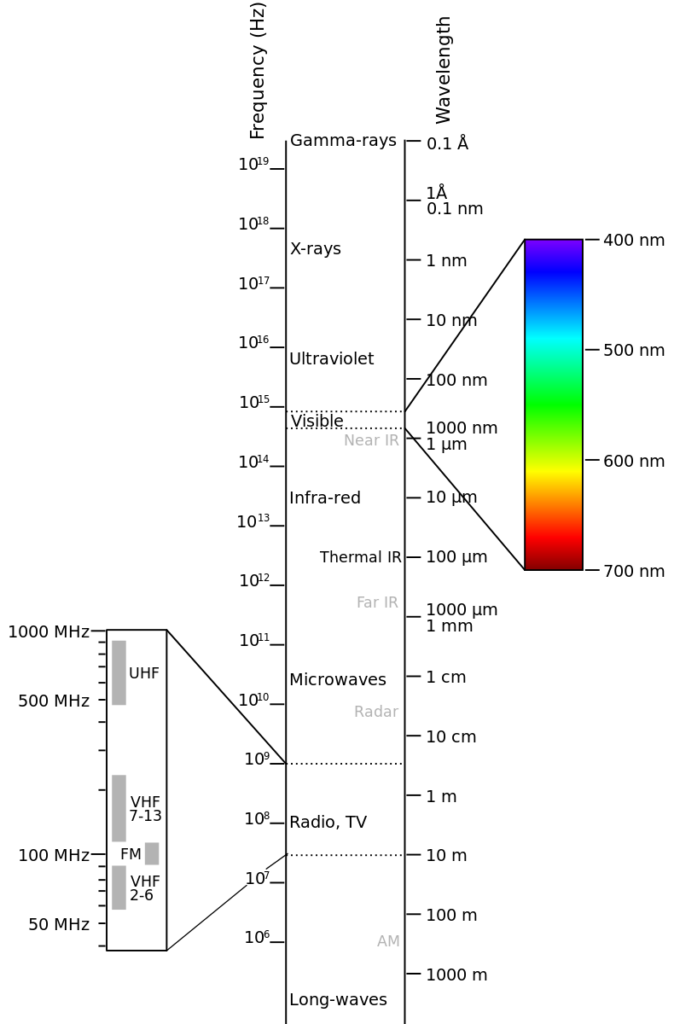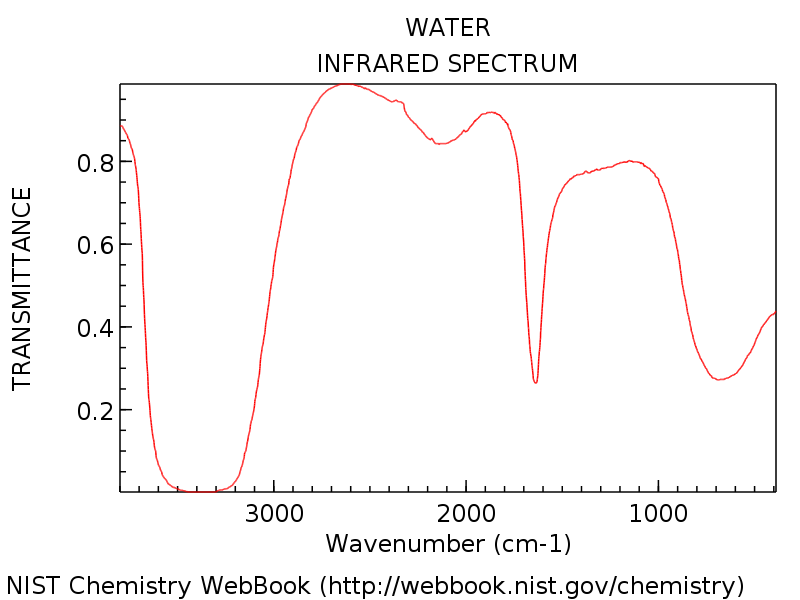The Electromagnetic Spectrum
A diagram of electromagnetic wavelengths and their types is shown below. Notice how the visible part of the spectrum is only a small part of the total spectrum.

Electromagnetic spectrum
Types of Spectra
A spectrum is the brightness of light for each wavelength. Many substances exhibit a characteristic pattern of bright and dark parts of the spectrum. There are several types of spectra:
- Transmission: light emitted by electron transmissions. Typically comprised of bright lines against a dark background. (Works best for hot, glowing objects or lights)
- Absorption: light absorbed by a fluid such as a gas or liquid. Typically comprised of reduced wavelength areas of brightness. (Works best for fluids, particularly in infrared)
- Reflectance: light reflected by an object or area that is typically darker for some wavelengths. (Often best approach for observing solid objects, or ground/water from above; e.g. for geology)
Spectral Options
Need to determine what wavelengths we need to observe: visible, Infrared, UV?
- Diffraction grating (transmission)
- Diffraction grating (reflection)
- Piece of CD (inexpensive, but quality may be insufficient)
- Prism
- Tunable filter
- Multiple detector/filter combinations
- iPhone spectrometer? (but would need an iPhone for each sensor!)
Spectra
Spectra show the intensity of light as a function of wavelength. Below is a spectral diagram for light transmitted though water in the infrared range. The high areas are wavelengths for which water is nearly transparent, while the low areas represent wavelengths for which water absorbs most of the light.

absorption spectrum for water (NIST)
- NIST water page
- HDF group HDF5 Software
Reference
Spectral grating tutorial (ThorLabs)